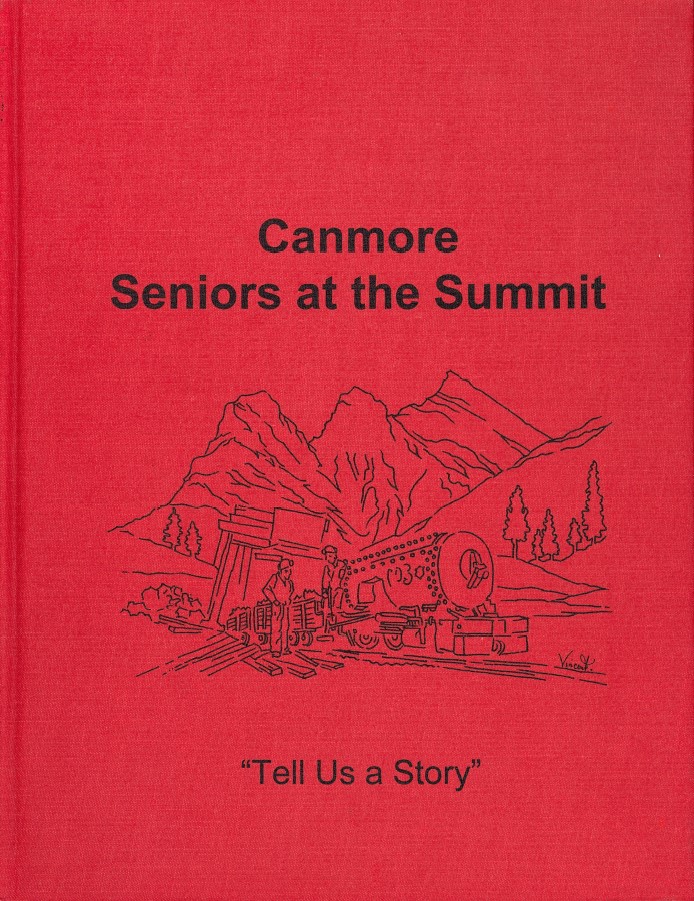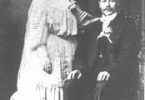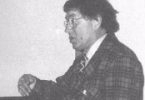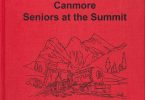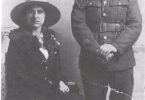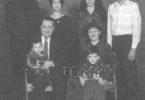Jack was born on the family farm in the Meadowbrook District of Central Alberta. We believe he came into the world on January 4, 1909. However, he may have been a year earlier, on the same day in 1908. No one is quite sure. It seems Vital Statistics had no record of Jack’s birth at all. He did not know this until many years later when he applied for his pension. The department’s staff would not accept his word alone as to how old he was, so his brother Jimmy had to sign affidavits saying Jack was telling the truth – but even Jimmy was not quite sure! No one seemed to know how Jack could have gone unregistered. His father was always so careful about such things. Perhaps the winter weather had made it impossible for Jack Sr. to make the trek to town to fill out the forms.
As was often the case in those days, especially for rural kids, Jack only went to school until he completed the eighth grade. He always loved to read but Jack certainly felt no remorse about leaving the classroom behind – in fact, we can all recall him saying how much he hated his studies but the family really needed help on the farm, so Jack decided to quit school.
But that was not to be the end of his education. Being very inquisitive by nature, Jack would find many things during his lifetime that quenched his need to know how things worked. His interests ranged from photography to small electronics. He knew you didn’t need to sit in a stuffy classroom in order to feed your mind!
Working the land was something Jack loved. Even though the Heath family was rather poor, Jack was happy living on the farm. He never begrudged the hardships of existing on what the family could raise. As with most homesteads in the area, the Heaths practiced mixed farming. They planted fields of grain and raised livestock. This was typical in the western provinces. Often the boys would supplement the suppertime menu by hunting rabbits, partridge, and other wild game.
Probably the hardest thing the family had to endure – besides those Alberta winters – was hail. If they lost the crop there was nothing to eat and no money. Sometimes during the harvest season Jack, along with his dad and brothers, would Travel as far as Vulcan to earn a little extra cash.
By about 1925, Jack Sr. and his wife, Ellen Henesay Heath, decided they would move the family back to Canmore but Jack Jr. would not go. He could not bear to leave the only home he had known, he remained behind with his Uncle Bill and continued to work on the farm. William Heath, or Bill as he was commonly known, was a bachelor at the time and we do not believe he ever married.
Jack used to talk about one time when Bill came in from the fields and lit the stove to make some tea. In no time, a horrible smell filled the kitchen. Bill looked around but could not find the source. Finally, he opened the oven door and out Bolted a very singed cat. It made for the open front door and was never seen again!
Ellen was miserable when Jack did not come with the rest of the family. For two years, she tried to persuade him to join them in Canmore. On some weekends, she would make the long journey by bus, back to the Meadowbrook District, in attempts to convince him to relocate. Finally, in 1927, Jack’s parents decided to sell the farm. Jack used to say he thought they sold the property simply because they knew it was the only way to get him up to the mountains – and they were probably right.
At eighteen years of age, Jack acquiesced to his mother’s wishes and made his way to Canmore. Interestingly, he never looked back! Jack found he loved the mountains and the Canmore area in general. So … he decided to stay.
Not long after coming to town, Jack took employment at the Canmore Mines. Even with today’s technology, working underground is a dangerous business, but during the 1930’s, it was even more hazardous. Everyone in Canmore had reason to worry about their loved ones toiling in the tunnels.
During the Depression, the mines were sometimes only open a day or two each week, which also meant there was not much money for anyone. However, the mines continued to turn a sizable profit through another venture by offering credit and keeping all the staff in debt to the Company Store.
In his youth, Jack was a man of great style. He was considered quite a snappy dresser – one who loved to dance and delight the ladies with his graceful stepping. In later life, Jack’s wife, Ruby, would be known to say that Jack was only stylish “until he got married!”
Jack was very passionate about outdoor activities. Skiing, hiking, and mountain climbing were three of his favorite things. He climbed almost every mountain in the Canmore area at one time or another. On horseback, Jack would also ride throughout the countryside. He covered the whole territory, from Kananaskis to Banff, with Bill Griffiths, a game warden and one of Jack’s best friends.
These things kept Jack busy in his spare time, which is something he had plenty of during the Depression. Jack may also have spent so much time outdoors in order to have a few moments to himself. He lived at home with the family until he married and there was not much privacy for a young man. All those bodies – mother, father, and those of the ten children still at home – crowded into such a tiny little house. We might have climbed a mountain, too!
In the early thirties, Jack discovered two of his other favourite things – photography and golfing. He became quite good on the greens and, one year, even won the Canmore tournament. He had a friendly rivalry with his brother, George, who was also a golfer. While Jack may have been good with a driver and a putter, his brother was even better. A year or two after Jack won the trophy, George took the prize and, after winning the tournament three years running, was allowed to keep it for good.
Jack continued to work at the mines, and it was there he met the woman he would eventually marry. Miss Ruby Novis was a registered nurse, hired by the company to tend to the miners and their families.
We do not know how long the courtship lasted, but on February 17, 1940, Jack and Ruby were quietly married at St. Michael’s Anglican Church. For reasons known only to the bride and groom, they did not tell anyone in Canmore they were getting married, except for two of Jack’s brothers and sisters. Uncle Spud and Auntie Beatrice were the only attendants on the wedding day.
Shortly thereafter, Ruby returned to Calgary to work as a supervisor for the General Hospital. She lived in the nurse’s residence and was forced to work under her maiden name. In those days, nursing administrators were not allowed to marry! Since they did not yet own a car, Jack would take the bus every weekend to go visit Ruby – in secret. It must have been a shock the day the General Chief-of-Staff discovered that not only was Miss Novis married, she was also pregnant! It didn’t really matter because it was one of the happiest days in Jack and Ruby’s lives. Ruby was going to have a baby, and she was coming home to Canmore.
The happy couple set up their home in what they fondly called “the shack” – a small cabin in the backyard of their friends, John and Doris Riva. After the usual period of time, Vernon Merle Novis Heath appeared on the scene. The delivery was a hard one and somewhat miraculous as Ruby had fallen from a balcony at the Canmore Hospital several years earlier. The railing gave way and she fell several stories. Along with the expected bruises and scrapes, Ruby suffered a broken pelvis. The doctor told her she would likely never be able to carry children, so when Vern arrived in the world on August 30, 1942, there was much to celebrate.
Within a year and a half, another little miracle came into the world. Wilda Darlene Heath was born on January 22, 1944, and the family was now complete.
Jack and Ruby rented the shack for three more years but the addition of children meant their place was becoming a little crowded. Therefore, Jack went to work building a house they could call their own.
In Canmore Seniors at the Summit, ed. Canmore Seniors Association, 2000, p. 129-131.

